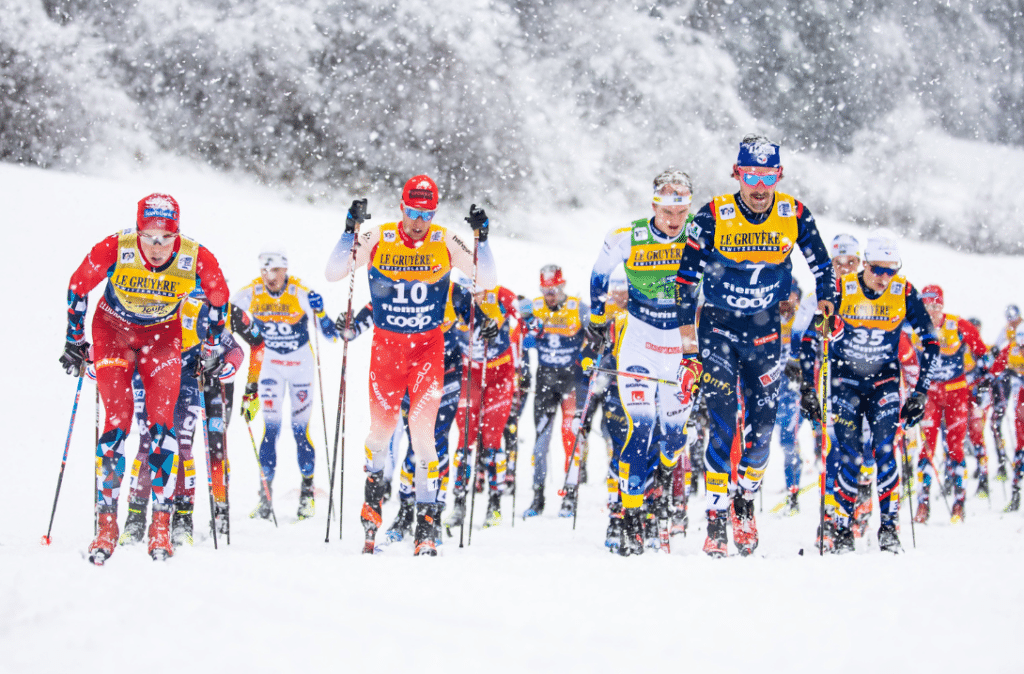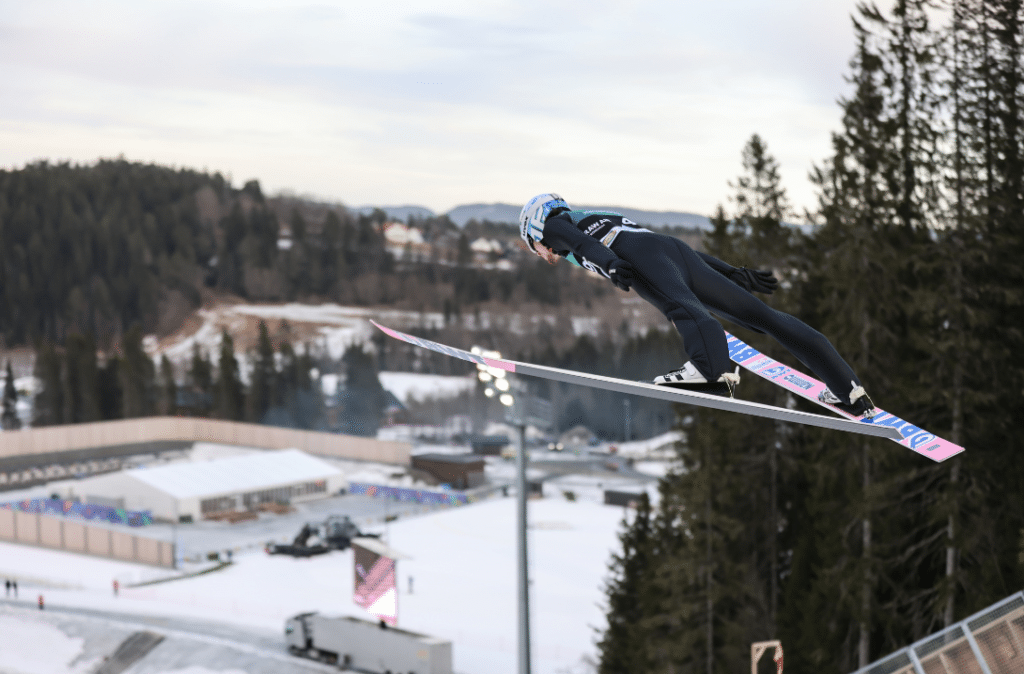The nordic season between the World Championships brought little new
Riiber, Kraft, Kobayashi or Klaebo - it was the familiar names that dominated the headlines in the season that was drawing to a close. A season that began with many question marks and ended with at least as many question marks. But first things first: No more fluorine to prepare the skis, that was the message before the competition series got going in November. Because the winter started in Scandinavia, in the freezing cold in Finland, the issue didn't play a role at first; the wax problem only popped up when the caravans stopped off in Central Europe in milder temperatures.
Because the classic highlight of the season was missing this winter, the sub-disciplines looked for alternatives. Ski jumpers and combined athletes didn't have to look far, for some it was the Four Hills Tournament, for others the Seefeld Triple. In cross-country skiing, the highlight was the Tour de Ski. Female ski jumpers and combined athletes had a harder time. The women's tour is still not on track, the German venues in Garmisch-Partenkirchen and Oberstdorf have been completed, but Austria's neighbor is still stuck, partly because the tiresome issue of the lack of floodlights at the Bergisel in Innsbruck has still not been resolved. The combined athletes are in an even worse position. Few World Cups, in Seefeld only a double instead of a triple, the fact that the women lack a lobby is noticeable in every nook and cranny. It would be important to promote the discipline, as there is still a threat that it will be eliminated from the Olympic Games, which would mean the end of Nordic combined as a competitive sport - funding would be lost.
It doesn't help that the world's top athletes are dominated by athletes from Norway. No offense to athletes who are world-class, but the competitions are and remain boring if you can engrave the names Riiber or Hagen on the winner's trophy before the first jump. Jarl Magnus Riiber once again dominated the competition in an impressive manner, Ida Marie Hagen replaced last year's dominator Gyda Westvold Hansen at the top, Marie Leinan Lund in third place in the overall World Cup made the Norwegian superiority over the "rest" of the world clear. So, unfortunately, we have to conclude the season results: Exciting is different!
That was also true of ski jumping this winter. Stefan Kraft was victorious right from the start, while the German eagles were still able to keep up in the first trimester and impress with good performances from the entire team, the DSV eagles were largely out of steam after the Four Hills Tournament. Only Andreas Wellinger kept up with the leaders to some extent, but by the start of the RAW air in Oslo at the latest, even the last German was out of form.
Poland's ski jumpers have been in poor form all winter, with stars such as Zyla, Kubacki and Stoch never finding their usual form, and only Aleksander Zniszczol was able to make the odd small exclamation mark. The bigger the hill, the better the Slovenians, which was also the case this winter and Ryoyu Kobayashi won the highlight, the Four Hills Tournament - and did so quite confidently. Another Japanese made the headlines: Noriaki Kasai, who is still competing in the World Cup at the biblical age of 51 for ski jumpers.
That left the Norwegians among the top teams. They had a public row about their (previous) coach Alexander Stöckl. For outsiders, the action had many ingredients of intrigue, Stöckl was no longer with the team at the end of the season, but they improved their performance and tried to salvage the season to some extent. It is difficult to judge from the outside whether there is a connection with the resignation of the previous successful coach.

Peter Prevc, a great in his field, bid farewell to competitive sport. Prevc once again caused a sensation with his victory at the ski flying competition in Planica. However, not only his brothers, but also his sister Nika, who secured the big crystal globe for the overall World Cup, ensure that the Prevc name is not lost to ski jumping. While the German jumpers in particular had an extremely mixed season, Alexandria Loutitt from Canada was able to prove that her 2023 World Championship title in Planica was no coincidence, Norway's Silje Opseth celebrated a new world record in ski flying in Vikersund and compatriot Eirin Kvandal underlined that she is definitely a force to be reckoned with in the coming winters with her overall victory at the RAW Air at the end of the season.
That leaves cross-country skiing. There is nothing new to report in the men's field. Norway's men dominate at will, and in their shadow - five Norwegians were in the top five places in the overall rankings at the end of the season - a German is stalking the world leaders: Friedrich Moch. While the 23-year-old from Memmingen represents the DSV colors as a soloist at the top of the men's results lists, two women, Victoria Carl and Katharina Hennig, are among the front runners. Generally speaking, the women's cross-country World Cup was probably the most evenly matched discipline when looking at all sub-disciplines. In the end, Jessica Diggins, an old acquaintance, came out on top ahead of the Swedes Svahn and Karlsson.
Surprisingly, Heidi Weng only finished eighth overall as the best Norwegian, which will not have been greeted with joy in the motherland of Nordic skiing. It is certainly fitting that Theres Johaug, a superstar, made a successful return to the national championships. Johaug won over 30 km, four minutes ahead of Weng, but did not want to comment on a possible comeback on the international stage. It would certainly be worthwhile, as the World Championships will be held in Norway next winter and up to 300,000 visitors are expected in Trondheim for the title fights. The newly refurbished competition venues at the Granasen ski center just outside the city were already in excellent condition during the test competitions and the weather also played along.
Which brings us to what is probably the biggest question mark for the future of the sport. It was an extremely warm winter, which could be a coincidence, but it could also be a harbinger of the looming climate change. Holding World Cups in low mountain ranges will therefore be increasingly associated with the risk of the weather not cooperating and a lack of snow. And even if the white splendor is somehow procured or produced, this is associated with enormous costs, which imposes an extreme economic risk on hosts. That's why everyone involved needs to coordinate even better in the future and possibly rethink World Cup planning. New, snow-sure venues would be one solution, new dates for traditional World Cup venues another. Perhaps even weeks or weekends with all sections in one place, as in Kuusamo, Lahti or Oslo. That would conjure up new tracks in the snow.
Foto Titel: Skispringen-News.de
Foto Text: Grega Valancic/VOIGT

